William Howell and I stand on the bow of the 50-footer Dream Girl, 30 miles off Oregon Inlet, North Carolina, with heavy spinning rods in our hands and big topwater plugs dangling from the rod tips. A splash erupts to the left of the bow. Howell takes the first cast. I follow up.
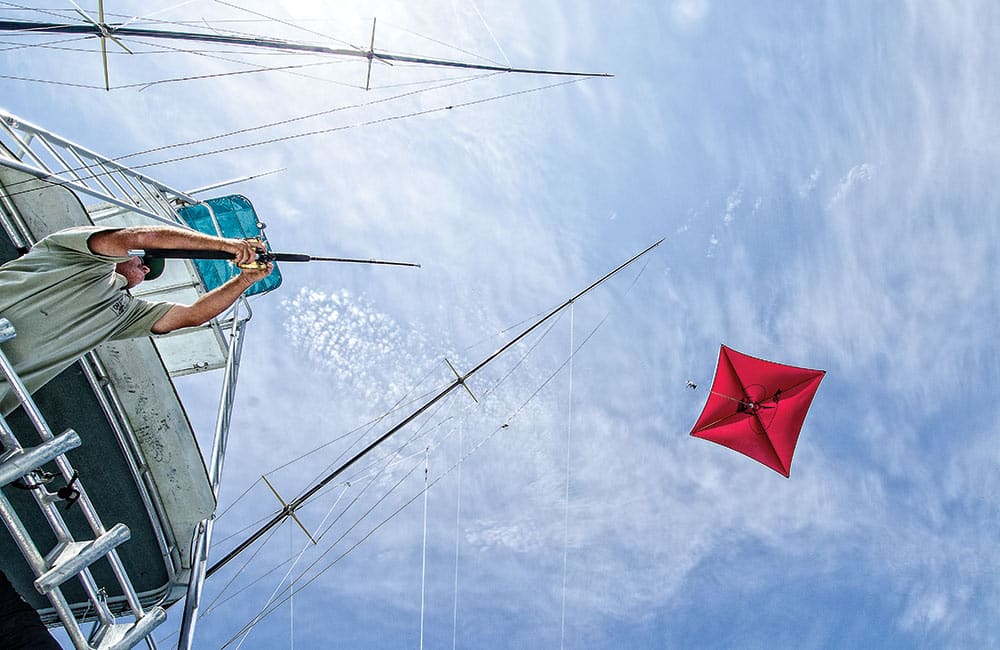
I pop my rod twice, and white froth explodes behind my plug. The rod bends heavily, but the 40-pound yellowfin charges the boat, trailing spray. Reeling frantically, I run backward the length of the bow. When the fish turns to run, the line comes tight, and the tuna drags me back to the bow.
I hang on with my toes on the rail and lean back against the drag. The fish pulls and I struggle to stay on the boat. When the blitz subsides, I’m the only one still connected to a tuna. Howell takes my rod and walks it back to the anglers in the stern. I throw my fingers in the air and do a happy dance.
When summer tuna turn to chasing flying fish, the yellow birds turn their noses up at a traditional spread of ballyhoo and spreader bars. For the ultimate in fish trickery, mid-Atlantic tuna pros switch to topwater plugs and kite baits to trigger the bite. The results have been explosive.
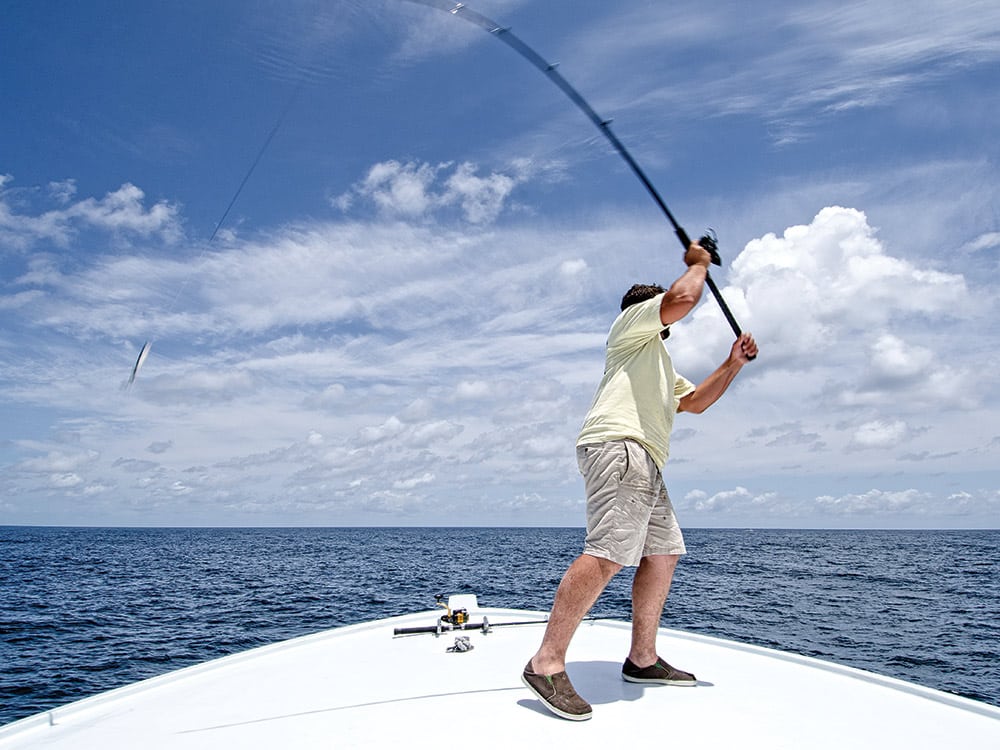
Popping Tuna
Yellowfins can show anytime off the mid-Atlantic coast, but late spring through summer, the tuna turn to chasing flying fish, and anglers opt for poppers and kite baits to match the hatch. The tuna routinely catch flying fish midair, so a trolled ballyhoo swimming below the surface doesn’t get their attention. Instead, they want their meal delivered by air. The tuna congregate on hills, cliffs, valleys and plateaus at the edge of the continental shelf. As long as the water temperature stays in the upper 70s, the skipper looks for bait and tuna marks on the fish finder. Usually, the fish give themselves away by leaping into the air after flying fish.
When Howell or I spotted the tuna from the bow, Snead slowed the boat to a crawl to sneak up on the fish. Many times we saw tuna scattering just under the surface. Floating patches of sargassum on the surface also hold feeding tuna, and beneath the weed, 40-pounders pick bait out of the vegetation.
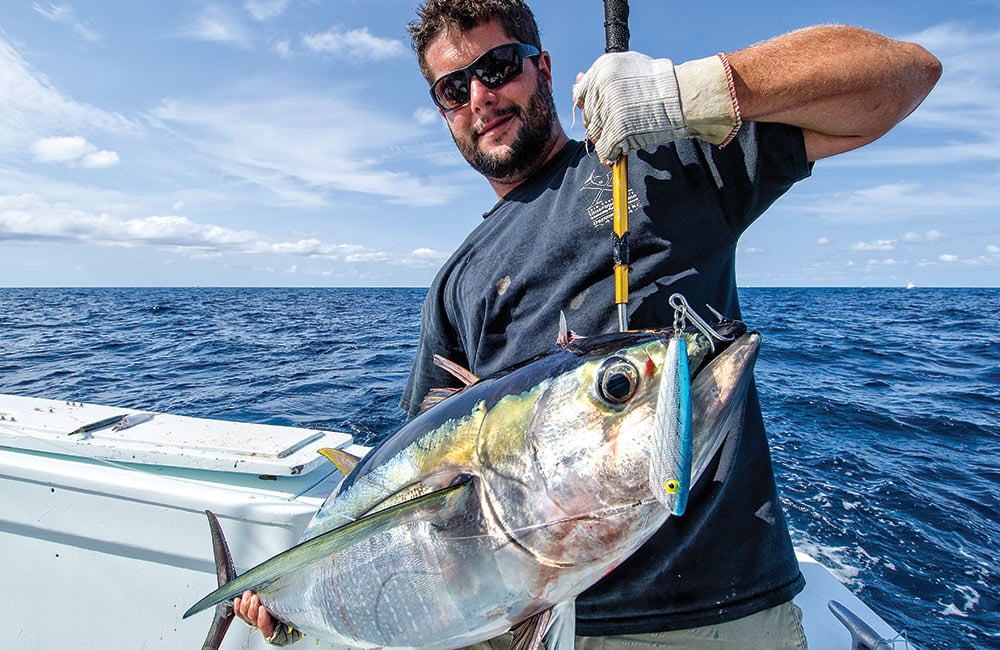
The tuna don’t hang out long. Usually, we only get a couple of casts before the fish disappear only to pop up again 100 yards away. As soon as we drifted into range, Howell and I let loose our longest casts.
Casting big plugs on hefty rods becomes heavy work. The key to maximum distance: Keep the line tight to load the rod on the backcast. I wrap my pointer finger in medical tape, but real long-casters grip the line against the rod foregrip for maximum traction.
We were using 8-foot spinning rods and high-power reels loaded with 65-pound braided line. A 250-pound Spro swivel connects 4 feet of 80-pound mono to the plug. There are a lot of fancy topwater plugs on the market, but Snead and Howell stick with the basics, like the Rebel Pop-R. Howell removes the standard treble hooks and replaces the rear hook with a 9/0 double fang hook. He tapes the shank of the rear hook to keep the connection stiff and prevent the hook from tangling on the line.
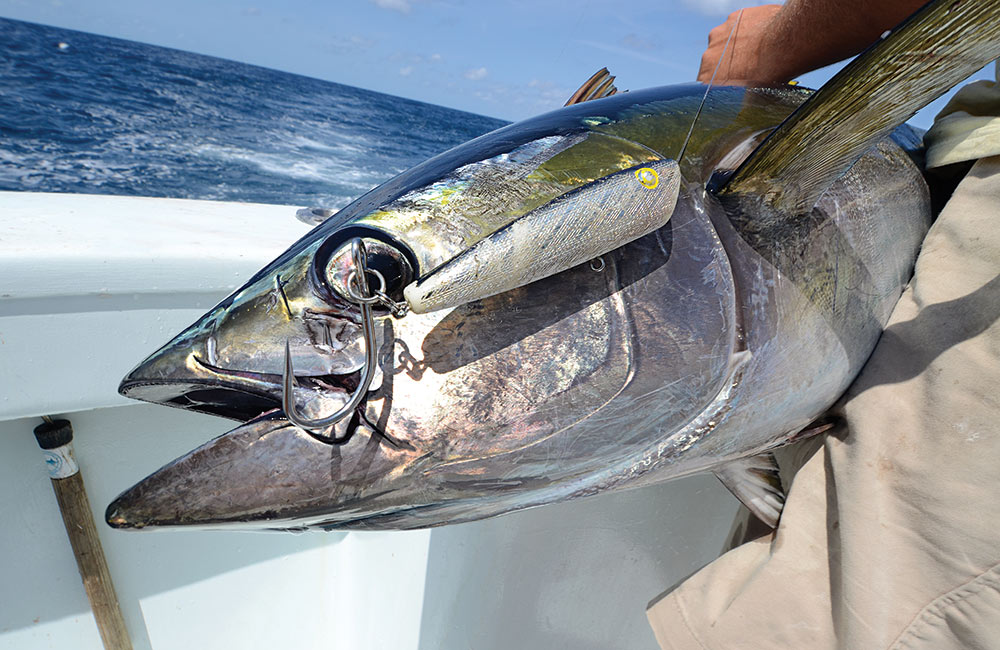
When the lure lands, keep the rod tip low. Slash the lure, then pause, then slash and pause. Maintaining a calm and calculated retrieve with yellowfin tuna dashing around the lure tests your resolve. But a slow retrieve keeps the lure in the strike zone longer. That’s extra important when those fish are on the surface for less than a minute.
Getting a bite is easy; keeping a yellowfin engaged is the hard part. Often bites result in a pulled hook. Repeatedly set the hook hard, then maintain the pressure on the line at all costs.
When the fish strikes, I use every ounce of my 140 pounds to keep it on the line. Many times, the tuna charges the boat, forcing me to run away from it while turning the reel at top speed. When the tuna turns and heads for the horizon, I run forward and crank to gain line. Topwater tuna fishing is a whole-body workout. If you’re not nursing sore muscles at the end of the day, you’re doing it wrong.
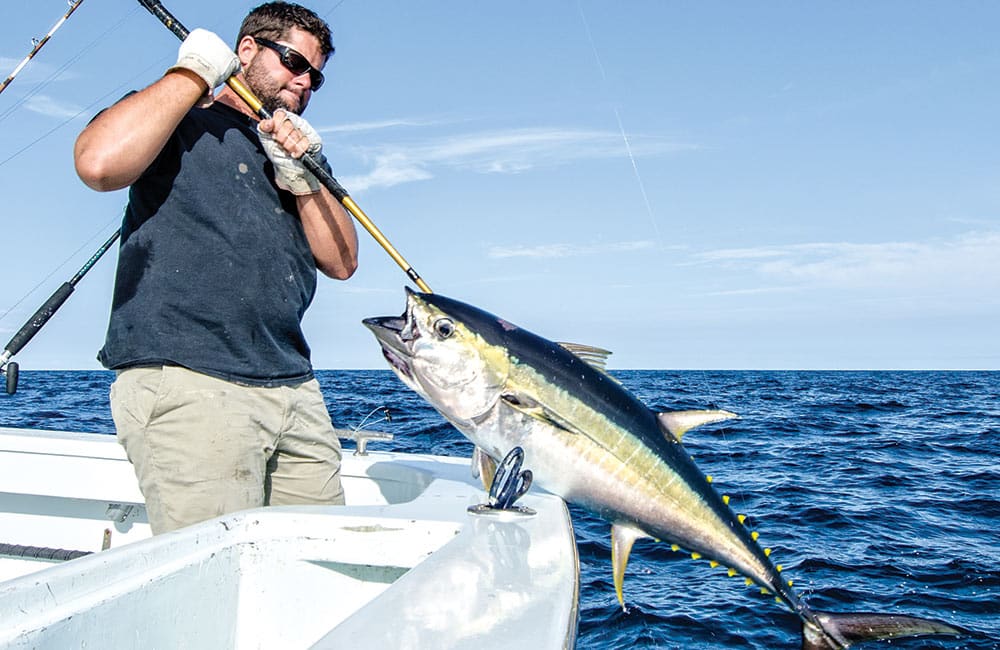
Go Aloft
Later in the day, when the wind started to blow, Snead and Howell deployed the kite baits. High winds and choppy seas make it tough to throw topwater lures, but they’re perfect for dangling a flying fish from a kite.
With the boat motoring into the wind at 8 knots, Snead released the kite from the bridge and Howell worked two 50s from the fighting chair. “Fishing got really competitive last summer,” Snead says. “We really fine-tuned our rig.” Winning the race came down to using the lightest tackle. “Braided line and light leader allowed us to fly the kite in light wind and control the baits better in high wind.”
The reels are spooled with 80-pound braided line that runs through a release clip on the kite line. Eight feet of 130-pound fluorocarbon leader runs from the braid to the hook in the lure. Hook choice becomes critical to catching a speeding tuna as it snatches a flying fish from the air. The crew uses a 9/0 double fang hook, sharpened until it makes your eyes bleed just from looking at it. They use rubber bands to lash the flying-fish body to the hook. Snead stresses, “When the fish hits, it’s important that the lure slides up the line.” This keeps the tuna from damaging the lure and improves the hook-set. “Be careful that the rubber flyer doesn’t impede the hooks,” Snead adds.
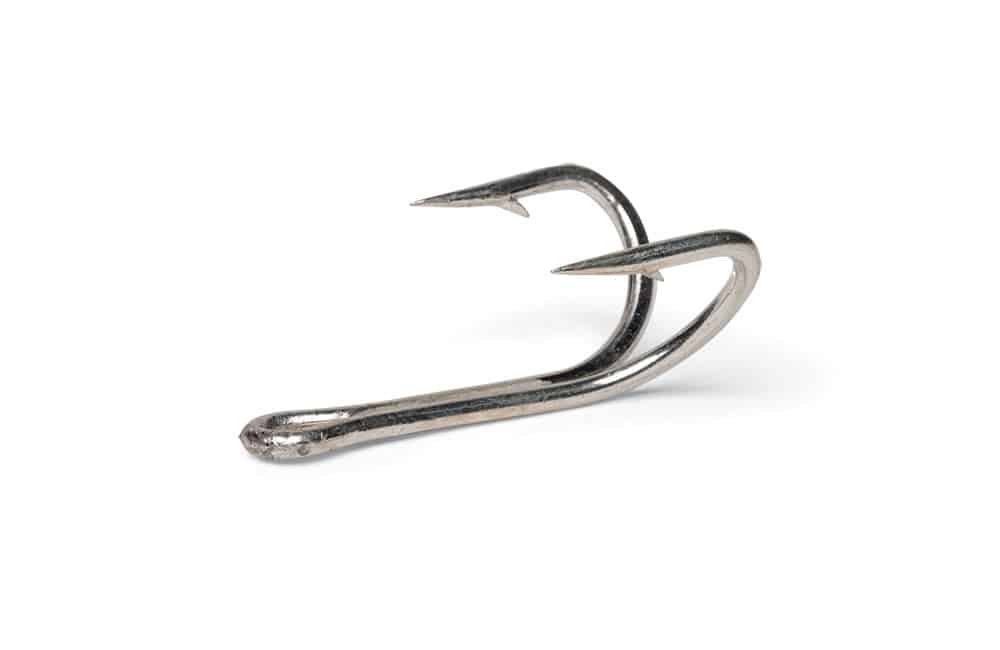
If the wind is howling, they like to slide a 2- or 3-ounce egg sinker over the leader, ahead of the flying fish. “The sinkers keep the bait down, and they really splash on the water,” Snead explains.
Once the kite is in the air, Howell controls the lines to keep the rubber flying fish dancing on the surface. Yellowfin tuna like their meals in the air; 50-pounders routinely jump 5 feet out of the water to grab one of the flyers. With all the violence and destruction, solid hookups depend on correct pressure at the release clip. The crew uses kites of different sizes and weights to match the wind conditions. Snead tries to keep the baits skipping off one side of the boat in clean water. When he marks a school of fish or spots tuna airing out, he turns the boat so the flying fish passes through the action. Snead says 8 knots is the magic speed, but he’s caught fish moving slower or faster. “We hooked three fish trolling at 14 knots,” he recalls. “Those were some of the most violent strikes I’ve ever seen.”
In two days of fishing, we got bites on topwater lures when the wind was calm, and bites on kite baits as afternoon sea breezes kicked up. As opposed to a traditional tuna spread of 10 heavy trolling rods and a whole kit of lures and baits, kite-fishing and poppers require only a couple of spinning outfits and a couple of conventional 50s. Snead and Howell transitioned seamlessly from one strategy to the other. If the crew hadn’t been ready for anything, we wouldn’t have caught any fish. Instead, we returned with a box full of yellowfins and memories full of the most spectacular bites in the sport.
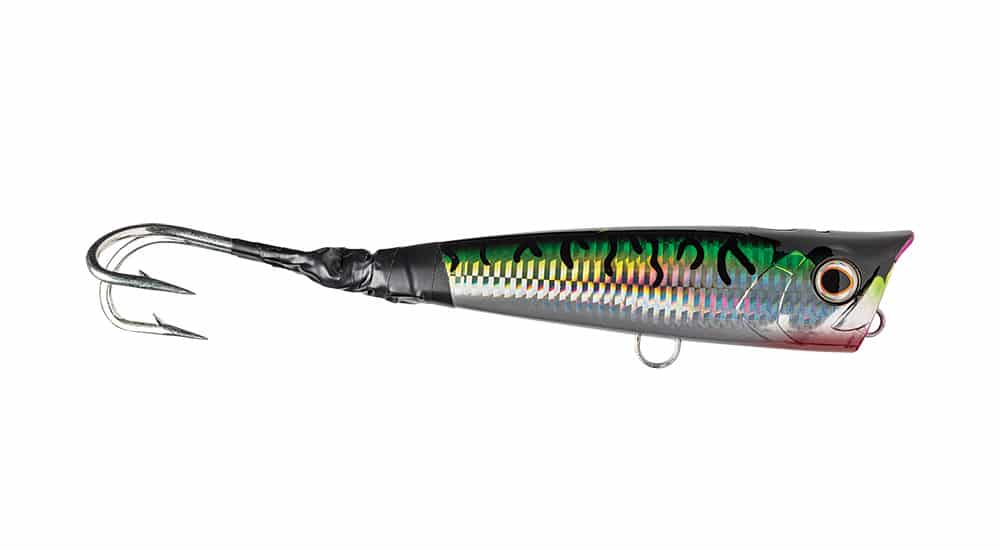
SWS Planner
Mid-Atlantic Yellowfin Tuna
What: Topwater yellowfin tuna Where: New Jersey to North Carolina When: Summer Who: Anglers with enough boat for offshore safety. These captains are trained at aerial tuna combat.
North Carolina
Capt. Jason Snead; 252-255-8037 Capt. Dick Harris; 252-202-6301
Virginia
Capt. Randy Butler; 757-932-0036
Capt. Jake Hiles; 757-749-6008
Fast Facts for Success
Air Mail: When tuna feed on top, long casts with poppers right into the melee yield results. Fly a Kite: Kite-fishing lets you present baits on the surface while keeping a safe distance. Keep Tight: Move about the boat to stay tight on a hooked fish and apply constant pressure.
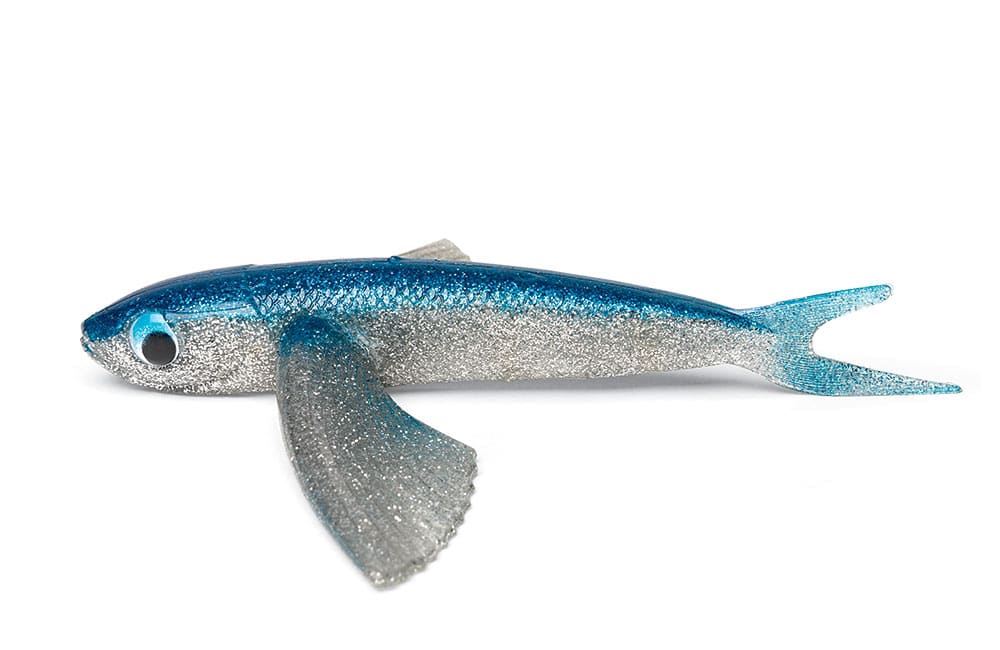
SWS Tackle Box
Mid-Atlantic Yellowfin Tuna
Rods: Topwater: 8-foot, heavy spinning. Kite: 50-pound conventional. Reels: Topwater: fast-retrieve spinning with 20 pounds of drag. Kite: 50-pound conventional, two-speed. Line: Topwater: 65-pound braid, 4 feet of 80-pound mono leader. Kite: 80-pound braid and 8-foot, 130-pound fluoro leader. Lures: Topwater: Big chuggers. Kite: Yummee Fly’n Fish









